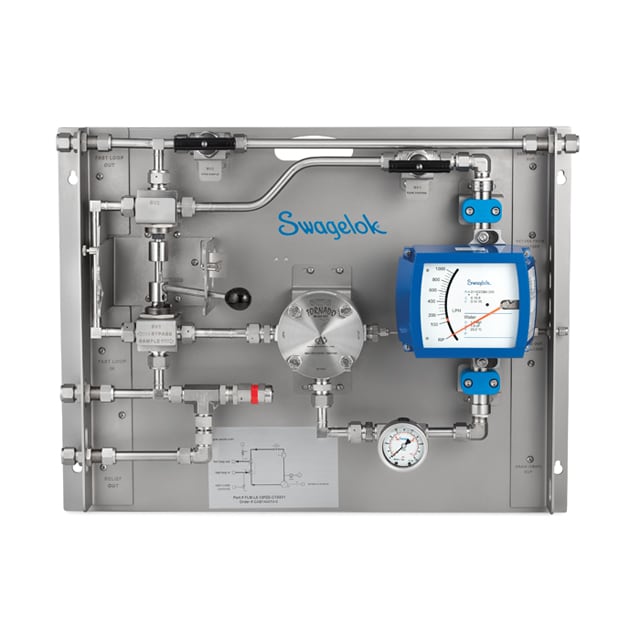10 Tips to Improve Sampling Systems

10 Tips to Improve Sampling Systems
1. Check for simple errors.
You can improve the reliability of your analyzers by auditing and then eliminating simple mistakes from your sample system installations, such as reversed check valves blocking your sample flow or a fast loop flowing backwards. These are easy to find and remedy.
2. Reduce gas volume upstream.
High-pressure gas can ruin a well-designed sampling system by causing condensation in the lines and excessive time delay due to gas compressibility. Furthermore, high-pressure gas can cause a safety concern due to the rapid decompression in the event of a component failure. It’s best to reduce the pressure of a gas as soon as possible by minimizing the sample system volume on the upstream side of a regulator.
3. Put pressure on liquid samples.
Liquid samples are the opposite of gas samples. Letting the pressure drop may release a dissolved gas, thus causing the liquid to bubble or foam. It’s best to keep the pressure of a liquid sample as high as possible.
4. Pay attention to system surfaces.
When fluid touches a surface, a few molecules stick. Loss of molecules due to adsorption can spoil your sample. Pick the proper materials for filter elements, regulator diaphragms, tube walls or gas cylinders. Also, consider the ambient environment. For instance, 316SS tubing can be damaged by the chlorine in sea water. Other tubing can become brittle with UV exposure.
5. Use compatible elastomer seals.
Material that is mismatched to your sample fluid may cause a failure like sample leakage or even a blockage within the sampling device, leading to less accurate analysis.
6. Avoid sampling from stagnant lines.
For a representative sample, make sure you’re sampling from an active and flowing process line. Remember that the timeliness of your sample is also dependent on the time it takes the sample to flow from the process to the extraction point. The location of the sample point can be a critical aspect of a successful sampling system.
7. Look for dead legs in your sample transport line.
A common problem, dead legs – or unpurged volume – allows molecules held-up from earlier samples to diffuse into the current sample, causing a slow analyzer response and continuous contamination of your system.
8. Keep vaporisers cooler.
A hot vaporizer body could boil the incoming sample, causing it to fractionate. Make sure you understand the temperature requirements of the chemicals in your system and appropriate equipment settings to prevent errors.
9. Speed your sample flow.
The slower your sample flow, the more viscous the drag placed on the interior wall of your tubing, causing solids to form. A faster flow is recommended for good sample mixing, cleaner sample lines, and faster response time.
10. Identify the causes of time delay.
If your measurements do not appear to be tracking with your process, you may have time delay in your system. Other symptoms of time delay are blurred or muted responses, laboratory disagreement, and poor performance of a control scheme.
